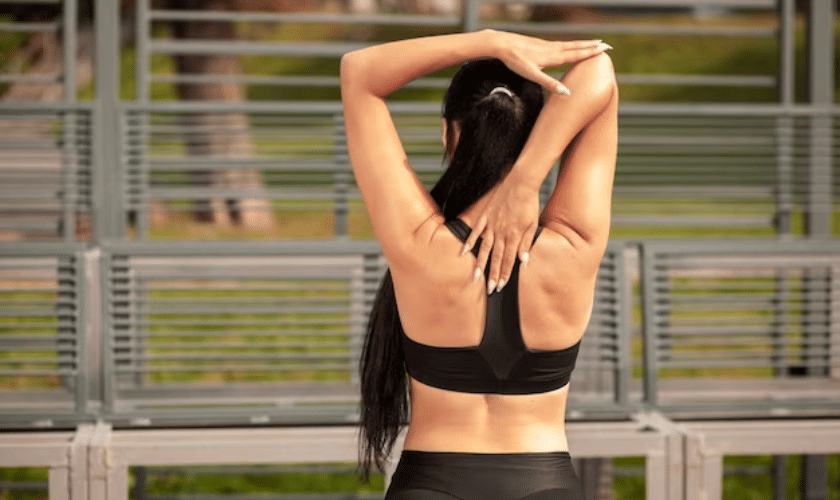
The Athlete’s Backbone: Safeguarding Against Spinal Injuries
Hey there, athletes! Whether you’re a seasoned pro or just starting your athletic journey, one thing remains constant: the spine is your body’s MVP. It’s the

Hey there, athletes! Whether you’re a seasoned pro or just starting your athletic journey, one thing remains constant: the spine is your body’s MVP. It’s the cornerstone of your physical prowess, providing the necessary stability and flexibility for those stunning moves on the field or court. However, with great power comes the need for greater care. Injuries to the spine are not just setbacks; they can sideline you for an entire season or even jeopardize your career. But fear not! This guide isn’t about holding back; it’s about powering up intelligently, ensuring you stay in the game for the long haul. Let’s dive into the world of spinal injury prevention, unveiling the exercises and practices that can fortify your backbone and keep you at peak performance.
Before we jump into the exercises, let’s understand the enemy we’re up against spinal injuries. Whether you’re a sprinter, gymnast, or footballer, your spine is constantly under duress, exposed to sudden impacts, repetitive movements, or excessive twisting. Disc herniation, strains, and fractures are just a few potential risks. Recognizing the warning signs, understanding your body mechanics, and acknowledging the importance of a strong core are crucial aspects of injury prevention.
A sturdy core isn’t just about sporting those washboard abs; it’s your shield against spinal injuries. Planks, bridges, and rotational exercises like Russian twists or wood chops engage not only your abs but also the deeper core muscles that support your spine. Remember, a well-rounded core regimen can significantly reduce the strain on your spine during explosive movements or sudden changes in direction.
Flexibility might not make headlines like raw strength, but its significance must be balanced. Incorporating spinal decompression, yoga, Pilates, or simple stretching routines into your regimen can enhance your spine’s range of motion, minimizing the risk of injuries during quick pivots or abrupt changes in body position.
No matter how impressive your physical prowess is, if your technique is flawed, you’re playing a risky game. Investing time in mastering the correct form and technique specific to your sport not only boosts your performance but also safeguards your spine from unnecessary strain.
In a world where ‘pushing through the pain’ is often celebrated, rest and recovery are unsung heroes. Adequate sleep, proper hydration, and allowing your body time to recuperate are as vital as any workout. This is when your body repairs and strengthens itself, including your spine.
Spinal injuries come in various forms, from muscle strains and ligament sprains to more severe herniated discs or fractures. Understanding these nuances is crucial. For instance, repetitive stress on the spine can lead to overuse injuries like stress fractures, common in sports such as distance running or gymnastics. Impact-related injuries, like herniated discs, are often prevalent in contact sports due to sudden jolts or collisions. They recognize the type of injury common in your sports arms with targeted preventive measures.
Different sports demand distinct movement patterns and stressors on the spine. Tailoring your exercises to mimic these movements can be highly beneficial. For instance, swimmers might focus on shoulder stability and thoracic spine mobility, while basketball players might emphasize exercises that improve lower back strength and agility. Customizing your routine based on the demands of your sport ensures comprehensive spinal protection.
It’s not just about hitting the gym. Optimizing your overall lifestyle can contribute significantly to spinal health. Factors like nutrition, hydration, and even mental well-being play pivotal roles. Maintaining a balanced diet rich in nutrients that support bone health, staying adequately hydrated to promote tissue elasticity, and managing stress to prevent muscle tension are as essential as any exercise regimen.
While self-education is empowering, seeking guidance from sports medicine professionals or physical therapists can be a game-changer. They can assess your specific strengths and weaknesses, offer personalized advice, and craft a tailored plan to bolster your spine’s resilience. Moreover, periodic check-ins with these experts can help identify any potential issues before they escalate.
Athletes, the journey to spinal resilience begins with your commitment today. Embrace these strategies, tailor them to your sport, and remember, your spine is the foundation of your success. Seek the guidance of professionals, like a chiropractor in Beverly Hills, to fine-tune your regimen. Together, let’s rewrite the playbook, not just for victorious games but for a lifetime of athletic prowess and pain-free performance. Your spine isn’t just a part of your body; it’s the backbone of your athletic legacy.

Hey there, athletes! Whether you’re a seasoned pro or just starting your athletic journey, one thing remains constant: the spine is your body’s MVP. It’s the
Call 323.939.9039 or click below to schedule an appointment.